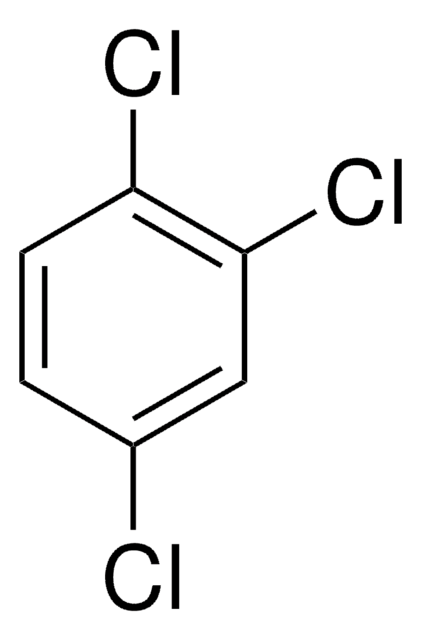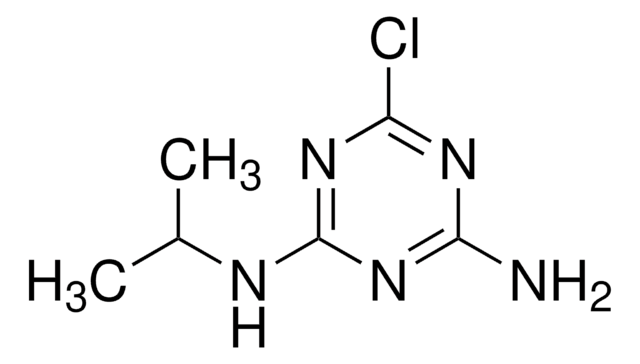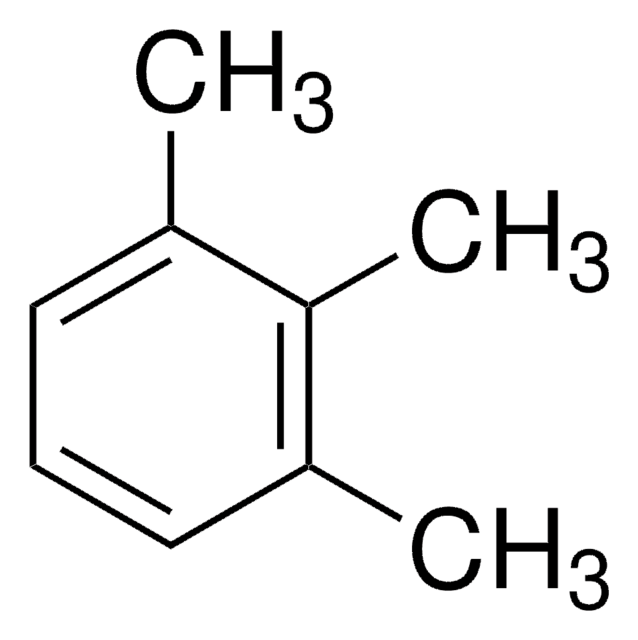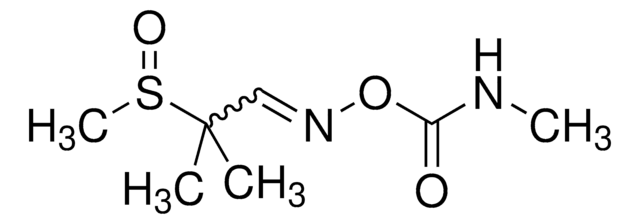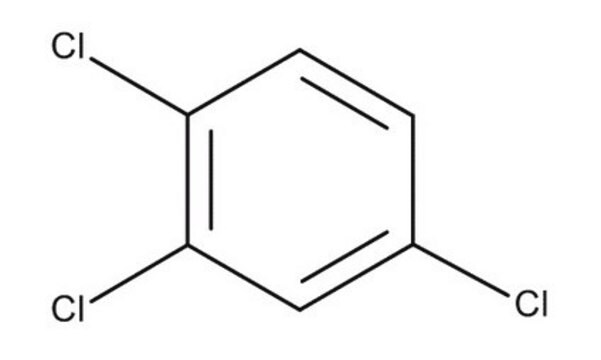36627
1,2,4-Triclorobenzeno
PESTANAL®, analytical standard
About This Item
Produtos recomendados
grau
analytical standard
Nível de qualidade
densidade de vapor
>6 (vs air)
pressão de vapor
1 mmHg ( 40 °C)
linha de produto
PESTANAL®
temperatura de autoignição
1060 °F
prazo de validade
limited shelf life, expiry date on the label
Lim. expl.
6.6 %, 150 °F
técnica(s)
HPLC: suitable
gas chromatography (GC): suitable
índice de refração
n20/D 1.571 (lit.)
pb
214 °C (lit.)
pf
16 °C (lit.)
densidade
1.454 g/mL at 25 °C (lit.)
aplicação(ões)
agriculture
environmental
formato
neat
cadeia de caracteres SMILES
Clc1ccc(Cl)c(Cl)c1
InChI
1S/C6H3Cl3/c7-4-1-2-5(8)6(9)3-4/h1-3H
chave InChI
PBKONEOXTCPAFI-UHFFFAOYSA-N
Procurando produtos similares? Visita Guia de comparação de produtos
Descrição geral
Aplicação
Informações legais
Palavra indicadora
Warning
Frases de perigo
Declarações de precaução
Classificações de perigo
Acute Tox. 4 Oral - Aquatic Acute 1 - Aquatic Chronic 1 - Skin Irrit. 2
Código de classe de armazenamento
6.1C - Combustible acute toxic Cat.3 / toxic compounds or compounds which causing chronic effects
Classe de risco de água (WGK)
WGK 3
Ponto de fulgor (°F)
235.4 °F - closed cup
Ponto de fulgor (°C)
113.0 °C - closed cup
Equipamento de proteção individual
Eyeshields, Faceshields, Gloves, type ABEK (EN14387) respirator filter
Escolha uma das versões mais recentes:
Já possui este produto?
Encontre a documentação dos produtos que você adquiriu recentemente na biblioteca de documentos.
Protocolos
US EPA Method TO-17: GC Analysis of Volatiles on VOCOL® after Collection/Desorption using Air Toxics Tube
US EPA Method 8260: GC Analysis of Volatiles on SPB®-624 after Purge & Trap using "K" Trap, Fast GC Analysis
Nossa equipe de cientistas tem experiência em todas as áreas de pesquisa, incluindo Life Sciences, ciência de materiais, síntese química, cromatografia, química analítica e muitas outras.
Entre em contato com a assistência técnica